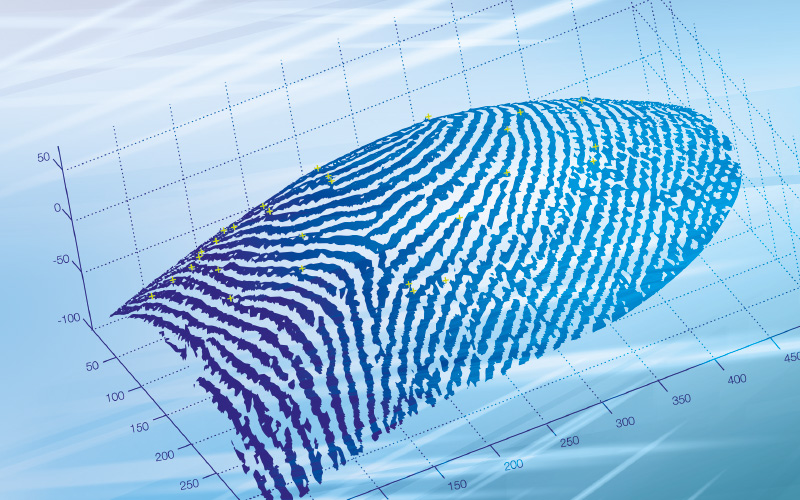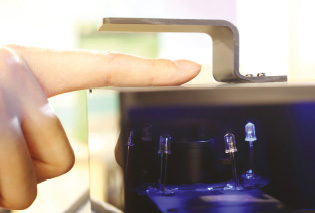
A team of PolyU researchers has developed a low-cost system of three-dimensional (3D) fingerprint identification, pushing contactless biometric technology into a new realm of speed and accuracy.
Although sometimes considered within the purview of law enforcement alone, fingerprinting is a way of uniquely identifying people with a history stretching back 2,000 years. Yet it has only been within the last few decades that automated systems have been used to accomplish the task. Existing systems are still limited in their accuracy and cannot fully satisfy the demand for both civilian and law enforcement use, especially with security concerns rising around the world.

Symmetrically distributed LED light sources are used to acquire fingerprint images from different perspectives
Indeed, there is still no standard method with which to represent and match fingerprints in 3D. Much of the problem lies in the fact that fingerprint skin is a translucent material that causes light scattering and specular or mirror-like reflections. It has been apparent for a time that new theoretical methods are needed to accurately simulate fingerprint skin for the precise recovery of discriminant 3D features. With that challenge in mind, Dr Ajay Kumar from the Department of Computing led a team to develop a 3D fingerprint identification system using breakthrough methods to ensure more accurate results, reducing the amount of equipment involved and the cost.
Backed by a General Research Fund grant of HK$500,000, the team has worked over three years to both overcome the limitations of contact-based biometric scans and heighten the advantages of non-contact methods. Dr Kumar explained that the contact-based acquisition of biometrics scans by rolling or pressing fingers against a hard surface such as glass, silicon or polymer “often results in partial or degraded images due to skin deformations, slippages or smearing”. This produces images that are not fully useful for the identification.
Non-contact fingerprint systems, on the other hand, avoid direct contact between the imaging sensor and the elastic surface of the skin, and can thus offer higher accuracy than contact-based methods. Yet, even so, not all contactless systems have equally accurate results. Among them, 3D systems have higher accuracy than two-dimensional (2D) systems. “However, such systems tend to be very expensive and bulky”, Dr Kumar explained. “This results from their use of multiple cameras or structured lighting devices. The key limitations of these systems lies in the lack of effective methods to recover 3D minutiae features.”
